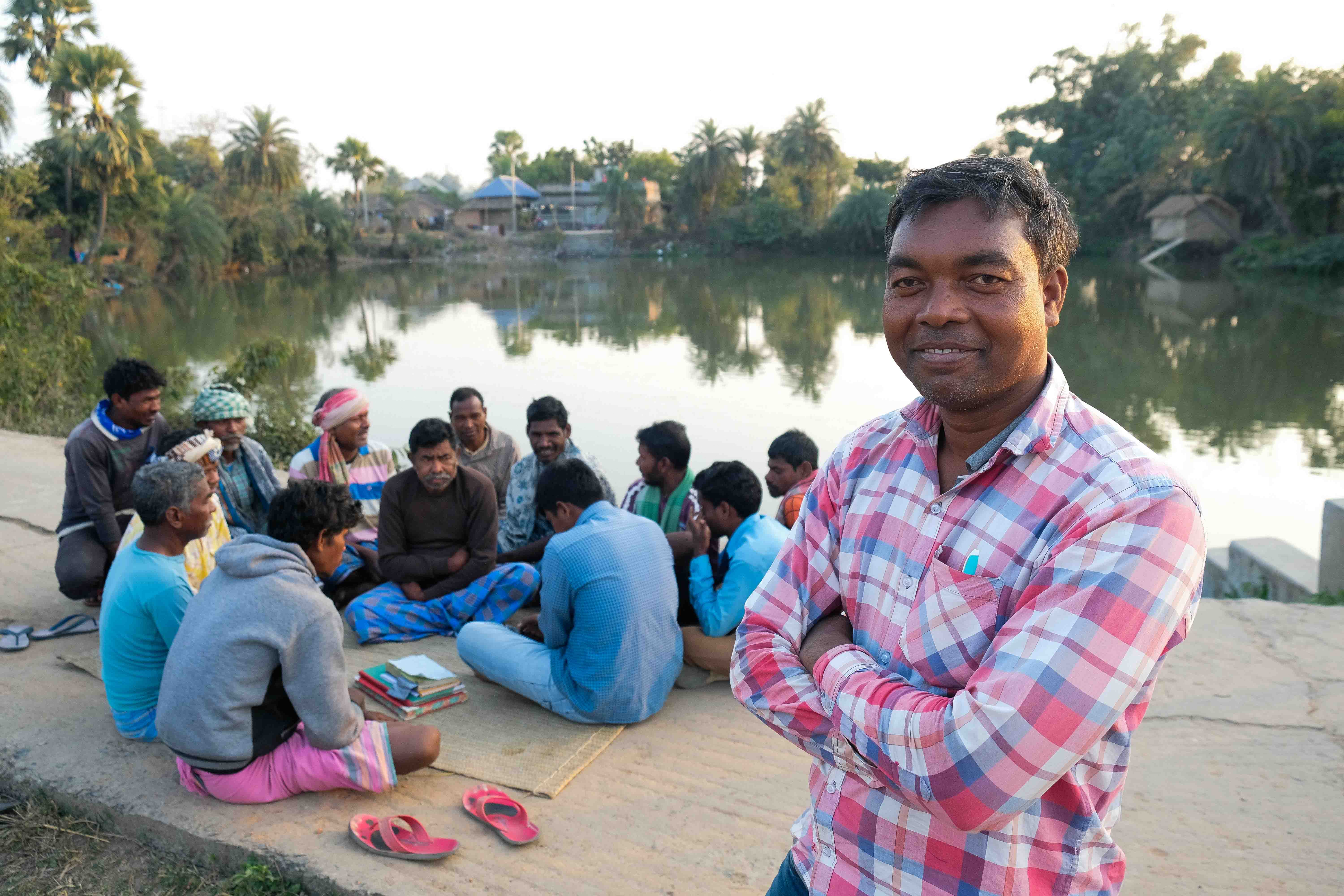There is an urgent need for people in rural
communities to change the way in which they view, and subsequently treat, community ponds. From being seen as a
community dumping ground, to being viewed and valued as an abundant community
resource, we must reignite the interdependent relationship between people and
ponds.
In its optimum state, a pond is a giver – of water, of livelihood, of
life. It contributes to local
groundwater recharge, and when in a state of abundance, it becomes the
lifeblood of the community – a place for gathering, worshiping and protecting.
Community elders, many of whose
ancestors built these traditional water harvesting structures, know the value a
good pond can bring, and find great pain in seeing the current state of
affairs, with so many ponds polluted and in disuse. Younger generations, used
to seeing water piped in from Government pipelines, often see no value in these
dirty dumping grounds, which silt up and fall into disrepair.
India is endowed with diverse and distinctive
traditional water bodies – of which a pond is just one. They support its large population and complex
biodiversity, but are under continuous stress and threat, caused primarily by
the people they are there to serve. As a result, there has been a stark decline
in both the quality and quantity of pond water, thanks to improper monitoring
of these water bodies.
Historically, people in rural India have had a
deep connect with their water bodies like ponds. A common property of the
community, a pond can be used for a multitude of purposes, including
irrigation, bathing, washing, and collecting water for domestic use as well as for
cattle. Ponds are also a habitat for
flora and fauna and a source for recharging the ground water. They mitigate
droughts and act as shock absorbers in flood-prone areas.
But in so many
rural communities today, the pond has fallen by the wayside. It is undervalued
and even disrespected. Pollution is a key factor with solid waste discarded by
local villagers and even industrial effluent, diminishing the ‘gifts’ a pond
can bring its community.
Pond catchment
and storage areas have been encroached upon reducing both the water
availability and quality. Many ponds have simply disappeared – filled in and
built over the top of. With the country
in the throes of a water crisis, it is criminal to think that these once
beloved ponds have been tossed aside.
And industry
is also to blame. Industrialization and its subsequent effluents and catchment
area degradation, chemical intensive agriculture, illegal mining activities and
cultural misuse have all played a role in the destruction of these once
bountiful ponds.
If we are to restore them to their former
glory, revive them, and harness them to meet the water needs of a community, it
is the people who must drive the change. Yet so often, the community’s expectation
is that government should do all the work. This attitude has to change if pond
pollution is to be controlled at source.
Non-profits and CSR bodies have a great role to play in making people aware, especially the young generation, about the importance of these water bodies. Thus, collective effort should be directed towards making people understand the long term benefits of conserving and managing these ancient and life-giving water bodies.
 - Thoughts by
Brajeshsingh Tomar, Vertical Head, Water
- Thoughts by
Brajeshsingh Tomar, Vertical Head, Water





.png)

0 Comment